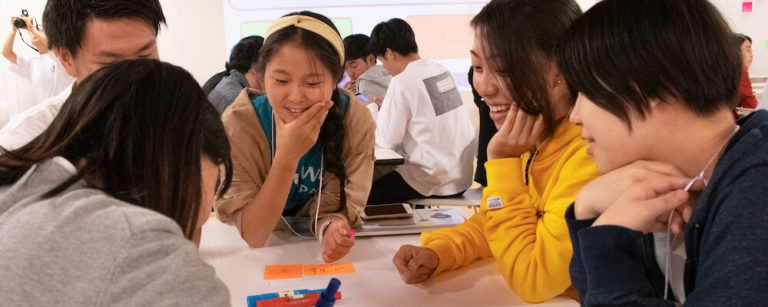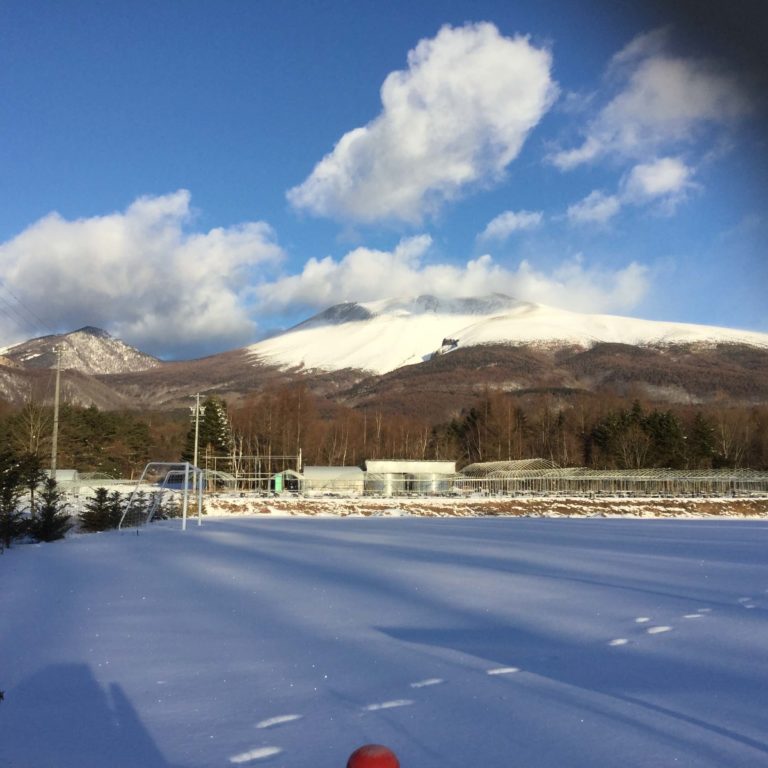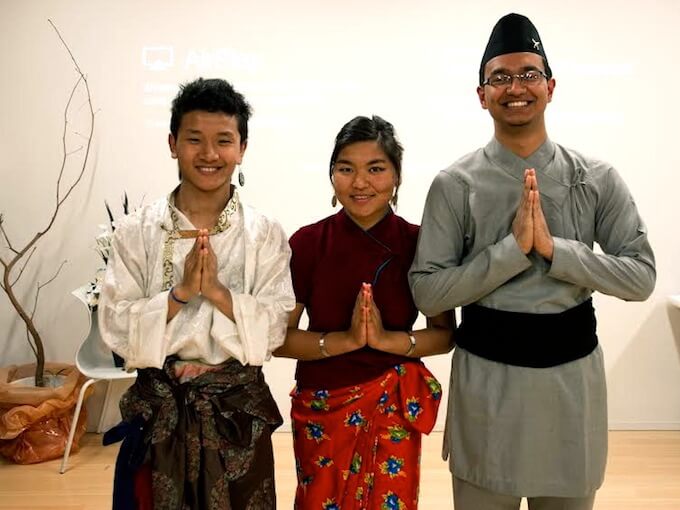Spring Project Week 2023 at UWC ISAK Japan, a key part of the International Baccalaureate (IB) Creativity, Activity, Service (CAS) curriculum, saw a blossoming of appreciation and interest in traditional Japanese handicrafts and craftsmanship. Our Grade 11 students enthusiastically delved into various CAS projects that showcased the beauty and intricacy of these timeless art forms, while also promoting cultural understanding and personal growth.
Preserving Tradition: Japanese Joinery and Timeless Craftsmanship
Hiro expressed his fascination with Japanese joinery, “I’ve always been amazed by the precision and skill involved in traditional Japanese woodwork. When I saw the opportunity to learn from a local artisan as part of our CAS project, I knew I couldn’t miss it!” Hiro, along with his fellow project members Fred, Robbie, Joshua, and Verlon, connected with Mr. Tsuchiya, a local craftsman, who shared his knowledge and experience on joinery techniques.
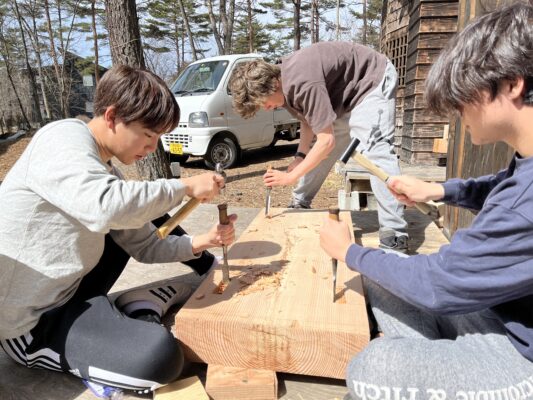
The joinery group worked closely with Mr. Tsuchiya to design and construct a wooden bench for the campus using traditional methods and materials. The students carefully selected wood, measured, and cut each piece to ensure a perfect fit. As they learned and practiced the intricate joinery techniques, they gained a deep appreciation for the craftsmanship behind the work. “This bench is more than just a piece of furniture; it’s a testament to the skill and artistry that’s been passed down through generations. We came into this project with no woodworking experience whatsoever, so we made a lot of mistakes. But we hope our bench will inspire future students to explore and appreciate traditional Japanese handicrafts,” said Fred.
Exploring Cultural Heritage: The Art of Japanese Indigo Dyeing
Meanwhile, another group of students immersed themselves in the world of traditional Japanese indigo dyeing. Their journey began during Fall Project Week 2022 when the group traveled to Kyoto to learn more about traditional handicrafts and explore the historical roots of indigo dyeing techniques. Rio was captivated by the process. “I never realized how much work goes into creating these vibrant blue hues. It’s an art form that requires patience, precision, and a deep understanding of the materials,” she said.
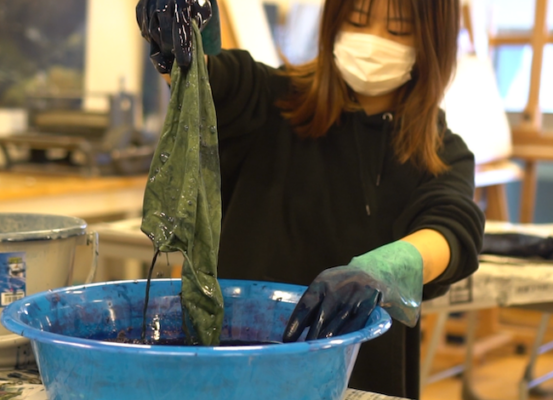 The indigo dyeing group experimented with various techniques, such as shibori, which they had learned during their trip to Kyoto. As they dipped and dyed their fabrics, the students marveled at the vibrant colors that emerged, each piece unique and imbued with a sense of history and culture. “Working with indigo dye has given me a newfound appreciation for the skill and dedication that goes into creating these beautiful textiles,” said Marika. “Our trip to Kyoto was an eye-opening experience that inspired us to delve deeper into the world of traditional Japanese handicrafts.”
The indigo dyeing group experimented with various techniques, such as shibori, which they had learned during their trip to Kyoto. As they dipped and dyed their fabrics, the students marveled at the vibrant colors that emerged, each piece unique and imbued with a sense of history and culture. “Working with indigo dye has given me a newfound appreciation for the skill and dedication that goes into creating these beautiful textiles,” said Marika. “Our trip to Kyoto was an eye-opening experience that inspired us to delve deeper into the world of traditional Japanese handicrafts.”
Their experiences in Kyoto fueled the students’ passion for indigo dyeing, and they were eager to share their newfound knowledge and appreciation with their peers during Spring Project Week 2023. By incorporating the techniques and history they learned during their Kyoto visit, the indigo dyeing group created a unique and culturally rich project that showcased the beauty and intricacy of this traditional Japanese art form. They have used their newfound skills to create beautiful indigo-dyed textiles, such as tote bags, to share with the UWC ISAK Japan community.
Unearthing the Beauty of Japanese Pottery and Ceramics
The pottery group’s initial foray into the world of ceramics took place during Fall 2022 Project Week, where students learned clay spinning and shaping techniques from artisans in neighboring Gunma prefecture and nearby Miyota Town. Building on their prior experience, the Spring 2023 Project Week saw the group of five students (Yutaro, Antonia, Yasmina, Vanessa, and Sabu) visiting the studio and gallery of renowned ceramic artist Ms. Shion Tabata. Here, they learned about the variety and distinctive elements of various Japanese pottery styles, and the intricate techniques required to create each one.
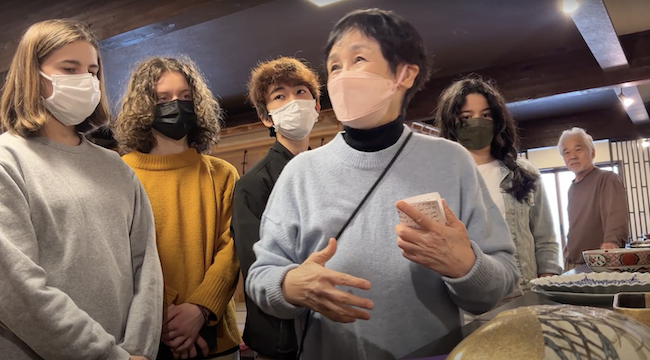
During their visit, students also had the opportunity to explore the kama, the giant oven used to bake the ceramics. This gave them a deeper understanding of the entire pottery process, from shaping the raw clay to firing the final pieces. Antonia remarked, “Seeing the kama and learning about the different pottery styles was an incredible experience. It really helped me appreciate the dedication and skill that goes into each piece of Japanese pottery.”
To cap off their immersive learning experience, Ms. Tabata hosted the students for a traditional Japanese tea ceremony. The pottery group marveled at the elegance and grace of the ritual, as well as the delicate beauty of the handcrafted ceramics used in the ceremony. “Participating in the tea ceremony was a once-in-a-lifetime experience,” said Yutaro, “It made me realize the importance of preserving and appreciating traditional Japanese handicrafts.”
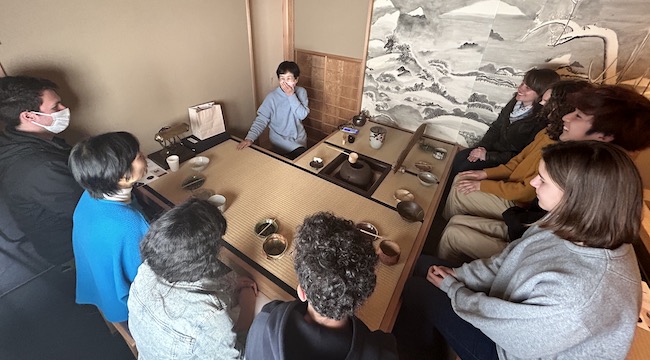 Inspired by their experiences in Gunma, Miyota Town, and Ms. Tabata’s studio, the pottery group is now creating a set of ceramics that will be gifted to the graduating Grade 12 class. These unique and meaningful pieces serve as a testament to the students’ passion for Japanese pottery, as well as their commitment to preserving and sharing the rich cultural heritage of Japan.
Inspired by their experiences in Gunma, Miyota Town, and Ms. Tabata’s studio, the pottery group is now creating a set of ceramics that will be gifted to the graduating Grade 12 class. These unique and meaningful pieces serve as a testament to the students’ passion for Japanese pottery, as well as their commitment to preserving and sharing the rich cultural heritage of Japan.
The ceramics will serve as vessels for the students to practice kintsugi, the art of repairing broken pottery with gold, symbolizing the beauty in imperfection and embracing flaws as part of an object’s history. “I think kintsugi is a perfect metaphor for our time at UWC ISAK Japan,” said Minori, a Grade 12 student. “We’ve all faced challenges and made mistakes, but we’ve grown from them, and they’ve made us who we are today.”
Reflections and Connections: The Lasting Impact of Traditional Handicrafts
The students’ experiences not only enriched their understanding of these art forms but also fostered a deeper appreciation for the dedication, skill, and cultural significance behind each craft. What makes these projects particularly exciting is that the introduction of traditional Japanese elements was entirely student-led, showcasing how students are embracing traditional wisdom on their own. As the students continue to explore and celebrate these timeless traditions, they cultivate a greater sense of connection to the rich cultural heritage of Japan.
CAS supervisor Jolyon Hinton reflected on the value of incorporating traditional handicrafts into the students’ education: “In today’s fast-paced, technology-driven world, it’s easy to overlook the importance of traditional crafts. Witnessing our students take the initiative to engage with these hands-on projects, we encourage them to slow down and develop a deeper understanding of the skills, patience, and cultural context required to create these beautiful and functional works of art. We hope that their experiences with these traditional crafts will inspire a lifelong appreciation for the intricacies and beauty of Japanese handicrafts and craftsmanship.”
As the UWC ISAK Japan community looks back on the Spring Project Week 2023, they celebrate the enduring influence of traditional Japanese handicrafts and craftsmanship in their students’ lives. The student-led CAS experiences not only broadened their cultural horizons but also contributed to their personal growth, instilling in them a lifelong appreciation for the dedication and skill behind each art form. By preserving and sharing these timeless traditions, UWC ISAK Japan continues to foster a vibrant and diverse learning environment that enriches the lives of all who pass through its doors.
